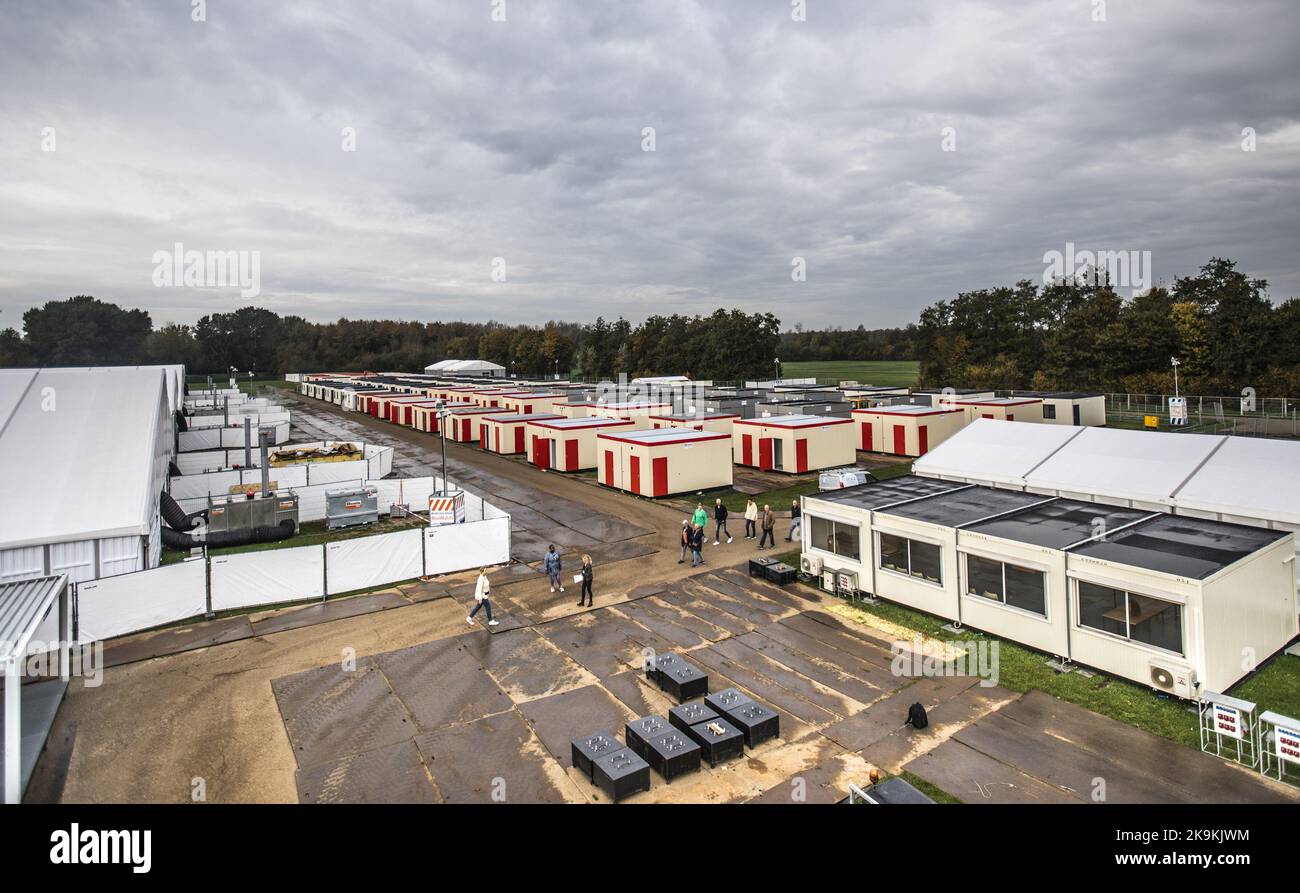The €1 Billion Question: How Better Asylum Shelter Organization Can Save Money

Table of Contents
Streamlining the Asylum Application Process
Reducing processing times and improving case management are crucial for efficient asylum shelter organization. Lengthy stays in temporary shelters translate directly into higher costs for accommodation, food, healthcare, and support services. A streamlined process reduces the burden on the system and frees up resources.
Reducing Processing Times
Faster processing is paramount. Delays increase costs exponentially. To expedite the process, several key steps can be implemented:
- Implement digital application systems: Moving applications online reduces paperwork, speeds up data entry, and allows for more efficient tracking of cases. This includes secure online portals for applicants and staff.
- Increase staffing levels in processing centers: Sufficient staff ensures applications are processed promptly and efficiently, minimizing backlogs. This includes employing more caseworkers, translators, and support staff.
- Improve cross-agency collaboration: Streamlining communication and information sharing between different government agencies involved in the asylum process eliminates bottlenecks and reduces duplication of effort. This requires better data sharing protocols and inter-agency task forces.
- Invest in translation services: Providing prompt and accurate translation services ensures applicants understand the process and can effectively communicate their needs. This can be done via improved language access in applications and interviews, as well as providing interpreters.
Improved Case Management
Effective case management is vital for efficient resource allocation. It ensures individuals are placed in appropriate housing and receive the necessary support in a timely manner. Key improvements include:
- Develop a centralized database: A comprehensive, easily accessible database allows for real-time tracking of cases, ensuring no one falls through the cracks and facilitating better resource allocation.
- Implement a case management software: Dedicated software streamlines workflow, improves data management, and offers valuable insights into case processing times and resource utilization.
- Provide better training for caseworkers: Well-trained caseworkers are equipped to handle complex cases efficiently and effectively, leading to improved outcomes and reduced costs. This involves ongoing training on relevant legislation, case management best practices, and cultural sensitivity.
Optimizing Shelter Infrastructure and Resource Allocation
Efficient shelter design, location, and operational management significantly impact costs. Strategic planning minimizes expenses and maximizes the impact of resources.
Efficient Shelter Design and Location
Careful consideration of shelter design and location is vital for cost-effectiveness:
- Analyze population distribution: Building shelters closer to where asylum seekers are located reduces transport costs and improves access to services. This involves detailed demographic analysis to determine optimal locations.
- Explore prefabricated housing solutions: Modular and prefabricated shelters are often faster and cheaper to construct than traditional buildings, offering flexibility and scalability.
- Negotiate better deals with landlords for larger-scale rentals: Securing long-term rental agreements for larger properties can often result in significant cost savings compared to individual units.
Reducing Operational Costs
Minimizing energy consumption, waste management, and security costs are essential aspects of cost-effective shelter management:
- Implement energy-efficient technologies: Investing in energy-efficient appliances and systems reduces utility bills over time. This includes using LED lighting, energy-efficient heating and cooling systems, and smart meters.
- Negotiate bulk purchasing of supplies: Bulk purchasing of food, cleaning supplies, and other essential items reduces per-unit costs.
- Implement smart security systems: Smart security systems improve safety and reduce the need for extensive staffing while potentially lowering insurance premiums.
- Utilize volunteer programs effectively: Volunteer programs can help with a variety of tasks, reducing the need for paid staff and fostering a sense of community.
Enhancing Integration and Self-Sufficiency
Faster integration reduces long-term reliance on shelter support. Investing in programs that promote self-sufficiency is a cost-effective approach.
Early Access to Language Training and Job Placement Programs
Providing early access to crucial services accelerates the integration process:
- Partner with language schools and employers: Collaboration with language schools and employers facilitates access to language training and job opportunities, reducing dependence on shelters.
- Offer vocational training programs: Providing vocational training equips asylum seekers with skills that increase their employability and reduce their long-term reliance on support.
- Provide financial literacy workshops: Financial literacy workshops help asylum seekers manage their finances effectively, promoting self-reliance and reducing the need for financial assistance.
- Create job placement services within shelters: Offering job placement services within shelters provides direct support and simplifies the job search process.
Community Engagement and Support
Fostering a sense of belonging reduces isolation and accelerates integration:
- Partner with local NGOs: Collaboration with local NGOs provides access to a wider network of support services and resources.
- Facilitate volunteer programs: Volunteer programs offer opportunities for interaction with the local community, promoting integration and reducing feelings of isolation.
- Create opportunities for interaction with the local population: Organizing community events and activities promotes social interaction and understanding, fostering a sense of belonging and accelerating integration.
Conclusion
Effective asylum shelter organization is not merely a humanitarian imperative; it's a financially prudent strategy. By streamlining the asylum process, optimizing shelter infrastructure, and promoting integration, significant cost savings can be achieved, potentially freeing up billions of euros for other essential services. Investing in better asylum shelter organization is an investment in a more efficient and compassionate system. Let's work towards a future where effective resource management addresses the €1 billion question and beyond, making asylum support both humane and fiscally responsible. Learn more about optimizing your asylum shelter organization today.

Featured Posts
-
 Crazy Rich Asians Tv Adaptation A Look At The Creative Team Behind The Series
May 11, 2025
Crazy Rich Asians Tv Adaptation A Look At The Creative Team Behind The Series
May 11, 2025 -
 Tom Cruise Reveals Henry Cavills Fallout Beard Growth Secret
May 11, 2025
Tom Cruise Reveals Henry Cavills Fallout Beard Growth Secret
May 11, 2025 -
 Conclave 2023 Potential Papal Successors Among The Cardinals
May 11, 2025
Conclave 2023 Potential Papal Successors Among The Cardinals
May 11, 2025 -
 Gambling On Disaster The Rise Of Wildfire Betting In Los Angeles
May 11, 2025
Gambling On Disaster The Rise Of Wildfire Betting In Los Angeles
May 11, 2025 -
 Shevchenko Fiorot Ufc 315 A Deep Dive Into The May Showdown
May 11, 2025
Shevchenko Fiorot Ufc 315 A Deep Dive Into The May Showdown
May 11, 2025
